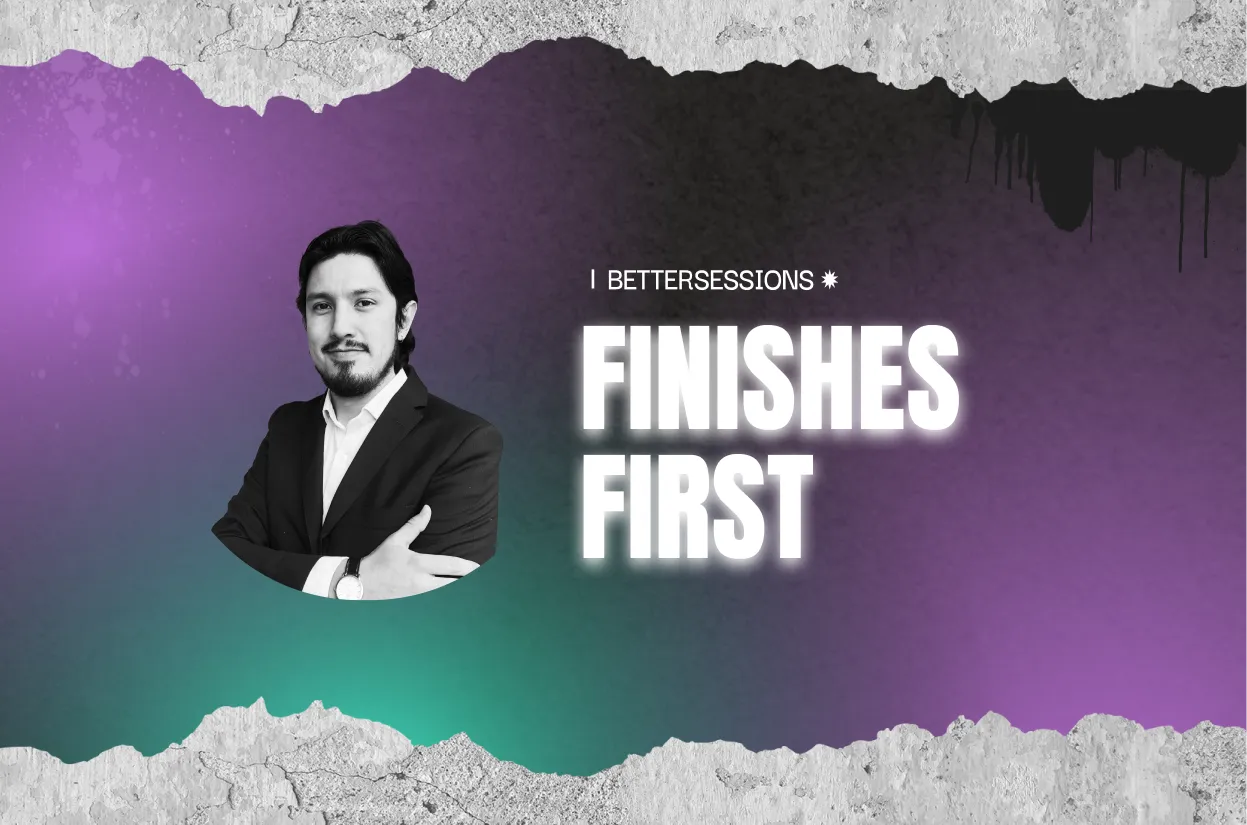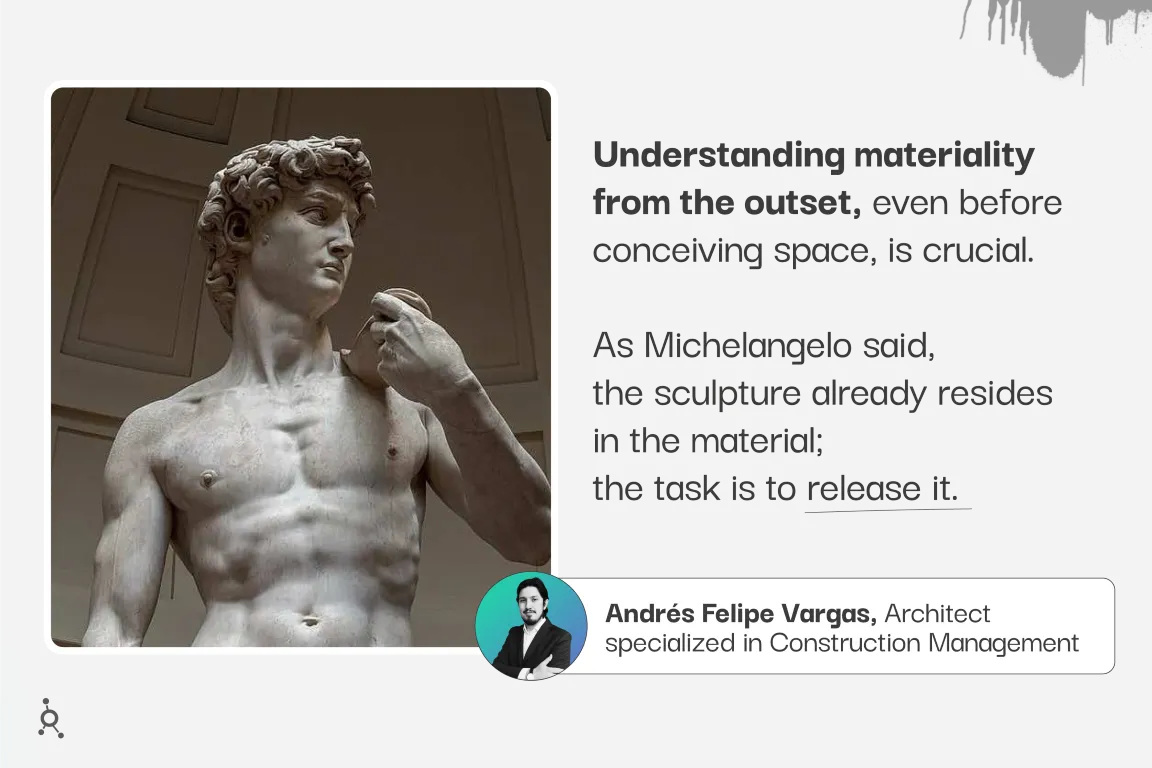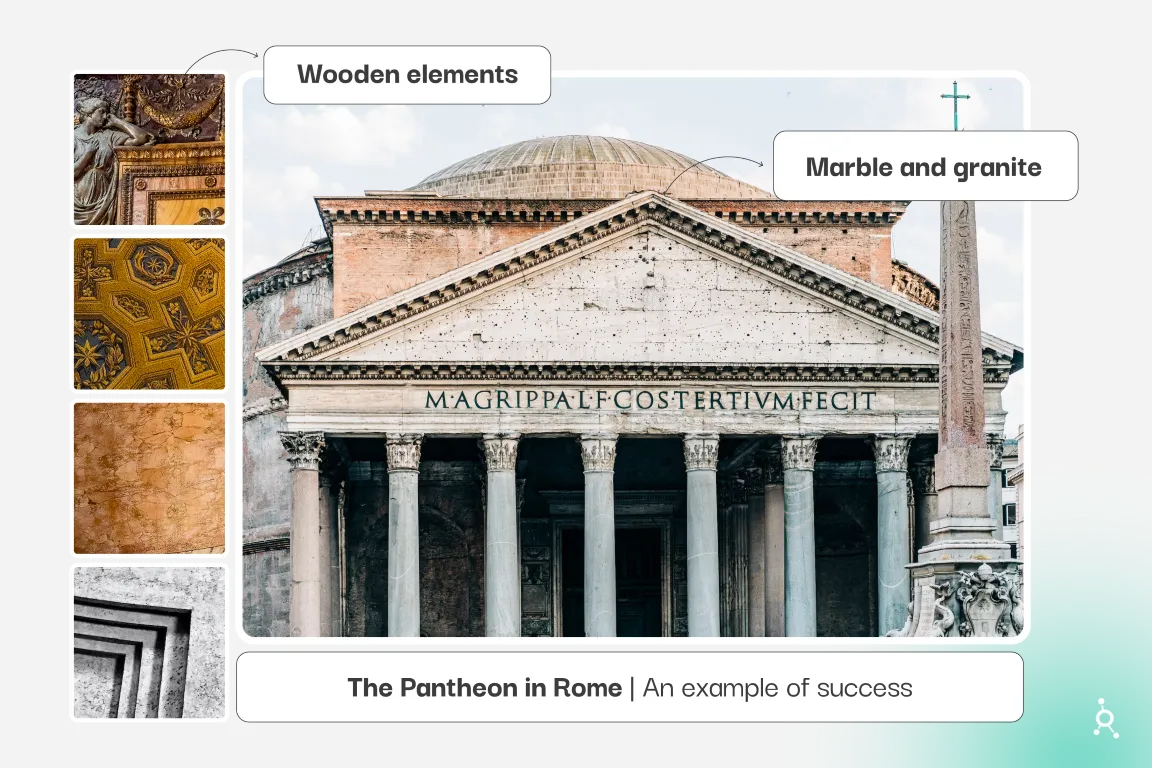#BetterSessions 15: Rethink Design Through Materials
SHARE POST
What comes first, the egg or the chicken? The materials or the design? We’ve got the answer! With this new #BetterSession, we will rethink the architectural design process with Andrés Felipe Vargas.
Meet Felipe, an architect specialized in Construction Management and holding a Master’s in Finance with over 8 years of experience. Felipe is a professor of Architectural Finishes at Pontifical Javeriana University. He has worked on two of the most ambitious urban projects in Latin America in recent years.
Architects Are Also Constructors
Throughout history, architects have been seen as “carpenters” (from the Greek “archi,” meaning “great,” and “tekton,” meaning “carpenter”), harking back to a time when knowledge was passed from master to apprentice. However, with the evolution of architectural academies, the discipline became theoretical, gradually disconnecting from construction. This shift has profoundly impacted the discipline.
Architects are not just designers, as suggested by the academies; they are also constructors. Learn everything about the importance of materials throughout the design process with this article about #BetterSessions vol. 15.
Why Is It Important to Consider Materials at a Design Stage?
Not properly considering materials can lead to a range of problems in various aspects. These issues can be aesthetic, economic, or related to construction. The selection of materials in our architectural designs holds fundamental importance from the outset of the process. Considering how materials should be integrated into our spaces and given a meaningful purpose is essential.
Regarding the approach to architectural design, it’s crucial to move away from the notion of starting with blank plans that don’t consider the nature of materials. The beauty of volumetry lies in allowing materials to guide architectural design demands.
Felipe makes his university students think of an architectural project as akin to an “exquisite corpse” game, where each collaborator adds their part without knowing the whole. Thus, a project is built through diverse perspectives and voices. Architects make decisions based on material and spatial references, creating their language and style. The influence of various aesthetics and modes of thought is reflected in the process.
Incorporating elements from other projects materialized in these “exquisite corpses,” goes beyond spatial considerations to encompass materiality and furnishings. Subsequently, mood boards enable the combination of materials and ideas, sometimes physically, to explore combinations and understand their compatibility. These boards of inspiration have an aesthetic and constructive impact, guiding the combination and manipulation of materials.
Materials dictate demands and define the essence of a project. If these demands aren’t understood, the project is destined to fail. Understanding materiality from the outset, even before conceiving space, is crucial. As Michelangelo said, the sculpture already resides in the material; the task is to release it.

Examples of Masterful Integration of Materials
The Pantheon in Rome is an example of success in trying to create harmony by thinking from the materials. The specific choice of marble and granite, precise modulation, and natural illumination through the oculus highlight mastery in material handling. The dome of the Pantheon also uses wooden elements to create structural lighting and aesthetic effects.

Meticulous consideration of materials is essential to avoid issues in architectural design. From the initial selection to combination and modulation, materials guide and define the project. Materiality is a language that must be understood and respected to create successful and lasting spaces.
Mies van der Rohe, characterized as a neoclassical architect, is defined by his meticulous approach to materials, dimensions, marble and granite formats, establishing a close connection between these elements and architectural design. His ability to use materials to shape fluid spaces and give voice to their natural qualities is exceptional.
His admiration for materials led him to differentiate the very structure of materials in his work. The German Pavilion in Barcelona exemplifies how architecture adapts to materials rather than forcing materials to conform. Through his approach, he allowed materials to speak through architecture.
Mies van der Rohe’s influence extended to America, where architects like Philip Johnson embraced his perspective. This generated a chain of influence that led to architects like Renzo Piano. In Piano’s case, materiality continues to govern space and the building’s experience. An example is the Art Institute of Chicago, where the floor is modulated in harmony with the architecture, and facades respond to the interior and materiality, creating an artistic experience in the building’s expansion and generating unique construction solutions.

Unlock Your Potential with BetterPros
As a specialized talent connector, BetterPros has curated this workshop exclusively for its talents and internal team. By fostering a supportive professional community, BetterPros aims to empower its members with skills to accelerate their career growth and success.
Overall, BetterSessions #15 was a deep dive into the world of finishes. Thanks to Feli, we learned a lot about the importance of materials as a giant factor in architectural design. BetterPros leads the pack by taking our knowledge to new heights through interactive and transformative learning experiences.
Did you find this #BetterSession useful? We hope so! We have a team of experienced architects, just like Felipe, that can help you create a design that meets your needs and budget. We also offer a number of benefits, such as:
If you are considering outsourcing architectural services for your next project, we encourage you to contact BetterPros to learn more about our services and how we can help you.
Hit us up today for a free consultation!

